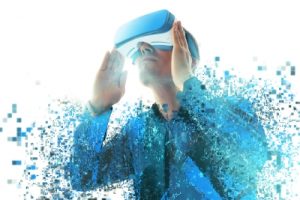 Training has been an early application of virtual reality (VR) in government. In fact, in a recent survey, 50% of public safety professionals report using virtual reality as a training mode in their organizations. Today, the use of the technology is extending far beyond training and into operations. VR is increasing in use across the federal government as a new way to conduct medical treatment and even warfighting. Continue reading
Training has been an early application of virtual reality (VR) in government. In fact, in a recent survey, 50% of public safety professionals report using virtual reality as a training mode in their organizations. Today, the use of the technology is extending far beyond training and into operations. VR is increasing in use across the federal government as a new way to conduct medical treatment and even warfighting. Continue reading


 Pandemic-necessitated remote work and increased reliance on online apps and sites for routine everyday tasks like shopping and transportation showed us that Internet connection is a critical utility. It also proved that getting connected is not enough -- the speed and quality of that connection have a huge impact on how we carry out day-to-day activities. In a timely coincidence, this reliance on connectivity comes at a time when networks are improving their service to supply that exact speed and reliability.
Pandemic-necessitated remote work and increased reliance on online apps and sites for routine everyday tasks like shopping and transportation showed us that Internet connection is a critical utility. It also proved that getting connected is not enough -- the speed and quality of that connection have a huge impact on how we carry out day-to-day activities. In a timely coincidence, this reliance on connectivity comes at a time when networks are improving their service to supply that exact speed and reliability.
